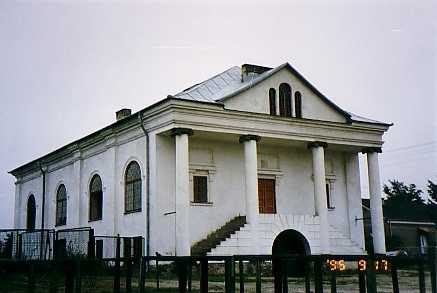The 17th - 19th Centuries
Klimontow is one of Poland’s oldest private towns, established sometime in the 12th century. In 1604, the town’s owner, Prince Jan Zbigniew Ossoliński, obtained a privilege from King Zigmunt III recognizing the town as an urban settlement. In 1611 the town received an additional privilege allowing it to conduct two weekly market days and three annual fairs. The town did not possess the de non tolerandis Judaeis clause which prohibited Jews from living or trading within municipal limits. Indeed, Prince Ossolinski wrote in its foundation charter that “the town is meant for honest free people of all trades and vocations, regardless of religion.” As a result, Jews quickly began settling in the town.
The town, together with its Jews, grew demographically as well as economically until the Swedish invasion of 1655. Although both Poles and Jews suffered at the hands of the invading Swedes, liberation by the Polish commander Stefan Czarniecki was no cause for celebration by the Jews as he proceeded to slaughter a good many of them himself. Indeed, the Jewish populace was generally treated with suspicion and hostility. In spite of these losses we find that in 1662 the poll tax was paid by 129 Jews. However, the plague of 1663 decimated the town, with only 22 Christians and 11 Jews having survived. Still, in 1674 the poll tax was paid by 83 Jews.
The community slowly rebuilt itself, erecting a wooden synagogue while also acquiring land for a cemetery. A description of life for the Jews during the second half of the 17th century could be found in the writings of Rabbi Berechiah Berech Shapira, who lived in Klimontow at the time.
In the early part of the 18th century, the Jews of Klimontów established a kehilla (formal community) which was subordinate to the larger kehilla in nearby Opatów. In 1727 the archdeacon of Sandomierz, Dominik Lochman, while visiting the parish in Klimontów confirmed the existence of a Jewish kehilla.
No drastic conflicts between Poles and Jews are recorded as the century progressed. Nevertheless, several court cases were conducted against local Jews: In 1727 the court of the bishop tried a jeweler from Klimontów who had been accused of stealing votive offerings from the church in Sulisławice. He pleaded guilty and was executed in the market square in the town of Koprzywnica. In 1737 the Jews of Klimontów were summoned before the court of the bishop again and fined 310 grzywnas to be paid within 9 days.
Klimontów became a center of cloth production during this time. The affluence of local Jews can be estimated by their monetary contributions to ecclesiastical institutions, one of which was the parish church of St. Paul in Sandomierz.
In 1766, 340 Jews lived in Klimontów alongside 336 Catholics. By 1789 there were 544 Jews, who made up 50.8% of the total population. In 1795 the Polish-Lithuanian Commonwealth was dissolved and its territory divided between the empires of Russia, Prussia and Austria with Klimontow falling under the latter’s domain. Poland briefly regained semi-autonomy in 1807 when Napoleon created the Duchy of Warsaw, but this effectively ended with the Congress of Vienna in 1815. The Congress created a Kingdom of Poland, sometimes called Congress Poland, as a Russian puppet state. This too came to an end after a Polish insurrection in 1831, at which point Russia dissolved the Congress Kingdom and began integrating it into the Russian empire.
In 1808 civil registration was formally introduced and by 1826 the kehilla began recording the births, marriages and deaths of Klimontow’s Jews in its own registers. In that year there were 49 births,25 marriages and 62 deaths in a community of Jews that numbered over 800.
In 1827 Jews owned the majority of shops in town as well as five inns. The most common occupations were peddlers, day laborers, dairy farmers and tailors. Moreover, Jews managed two soda water plants and mills outside of town. Jews were sufficiently well off that by 1848 they began work on a new synagogue that would cost the princely sum of 30 thousand złoty. It was completed in 1851, replacing the old wooden synagogue. Next to it stood the rabbi's house, a mikveh, a wooden hospital building and two cheders. The cemetery was situated on the eastern side of the synagogue. By 1860 there were over 1500 Jews among a general population of 1750!
The following items have been submitted for all to view
- My Trip to Klimontow, a pdf file of Judy Seibel Liebeskind's trip to Klimontow in 1996. First published in the Kielce-Radom SIG Journal in the Summer of 1997.
- The Synagogue in Klimontow Here is an article from Biuletyn Zydowskiego Instytutu Historycznegoe w Polsce. Edited by Warren Blatt of a translation from Polish by Gwido Zlatkes.
External Links

